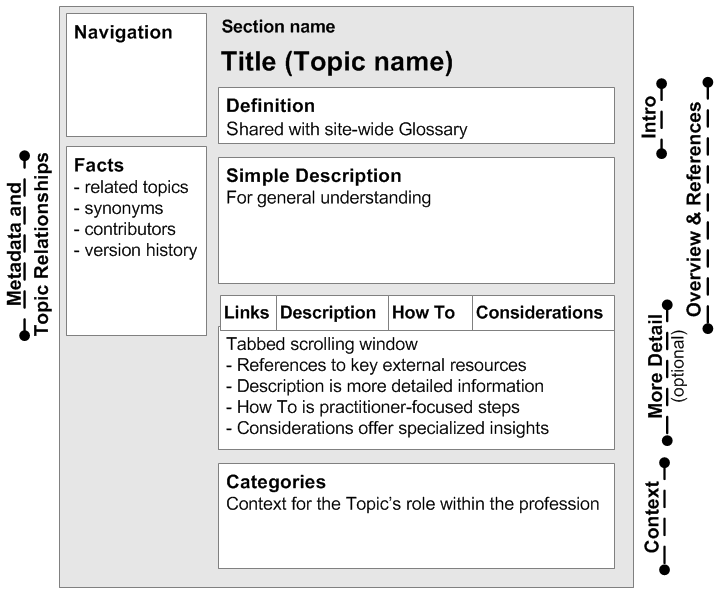Because of the way that Usability BoK content is managed using a database, it is possible in the future to use particular chunks of content from a Topic page. For example, if a user indicates that they are an HR manager or journalist, rather than a usability practitioner, they may have the option to see only the 'overview' (title, definition, and simple description) for each Topic, as a way of matching the content to their experience and need for information. Here is an illustration of the main elements of content within each topic page:
Can 'Authoritative' and 'Contributed' Content Co-exist in a Living Model?
|
|||
|
|||||
About the Usability BoKHow You Can HelpWe need the help of volunteers to refine and extend the content. If you are interested in contributing, please fill out the volunteer form. A Project of
|
Home | What is Usability? | Topics | About the Usability BoK | Glossary The Usability Body of Knowledge © User Experience Professionals' Association 2005-2012.
|
||
| © 2010 Usability Professionals Association |


 UXPA
UXPA
